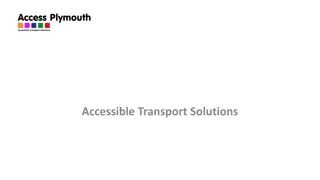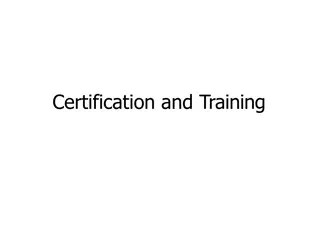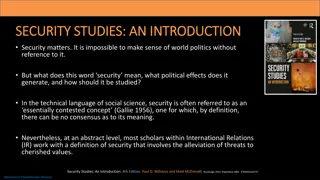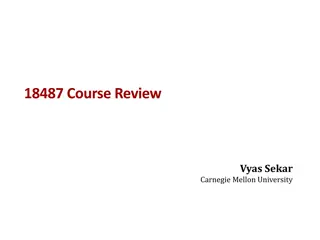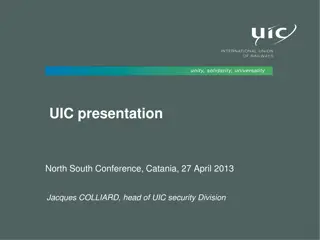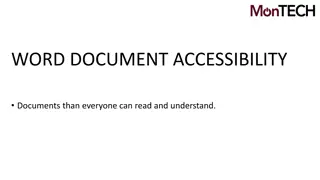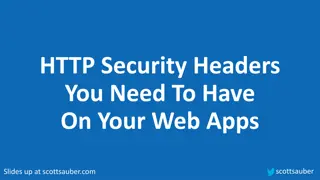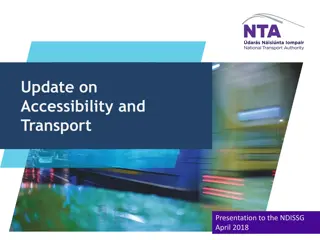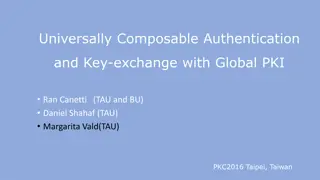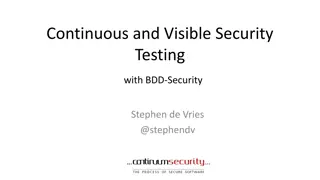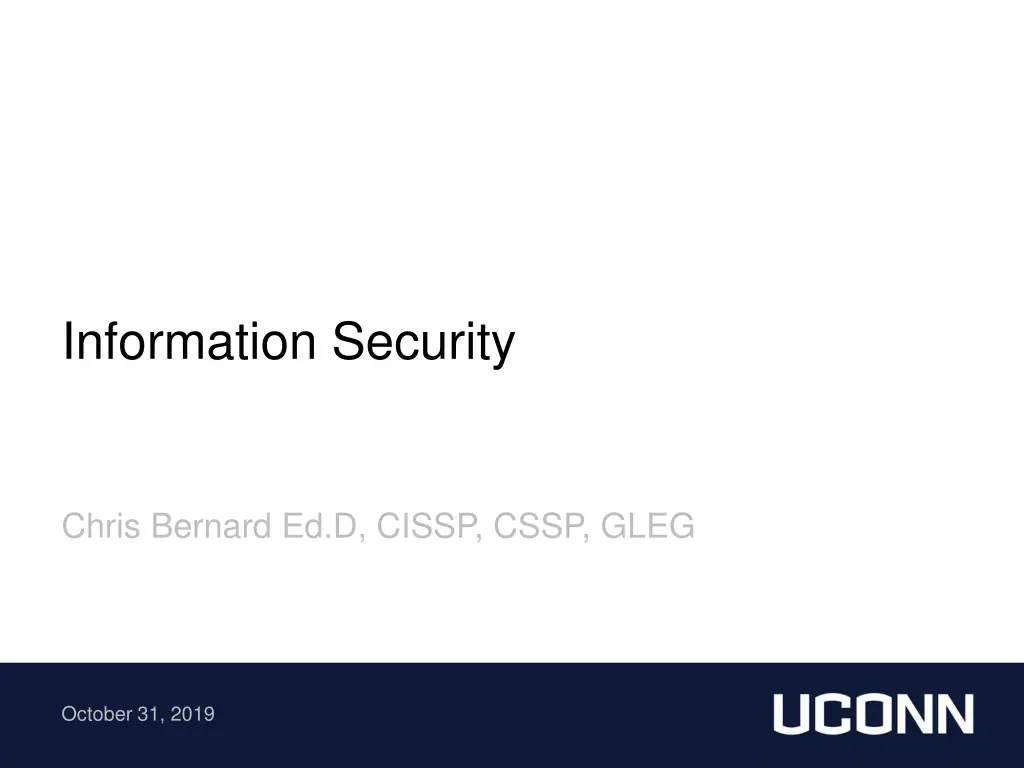
Comprehensive Information Security Strategies for Academic Institutions
Enhance your academic institution's data protection with a layered security approach, robust threat defense strategies, and adherence to the NIST Cyber Security Framework. Implement technologies, policies, and practices to mitigate security threats effectively.
Download Presentation

Please find below an Image/Link to download the presentation.
The content on the website is provided AS IS for your information and personal use only. It may not be sold, licensed, or shared on other websites without obtaining consent from the author. If you encounter any issues during the download, it is possible that the publisher has removed the file from their server.
You are allowed to download the files provided on this website for personal or commercial use, subject to the condition that they are used lawfully. All files are the property of their respective owners.
The content on the website is provided AS IS for your information and personal use only. It may not be sold, licensed, or shared on other websites without obtaining consent from the author.
E N D
Presentation Transcript
Information Security Chris Bernard Ed.D, CISSP, CSSP, GLEG October 31, 2019
Our Goal To enable the protection of information in support of the academic, research and philanthropic efforts of the university.
A Layered Approach Security Threats Can Be Mitigated By: Technology Behavior and Education Policy / Process
Enabling Better Security Practices Communication (Why is this necessary, How will it impact you) Stability and Usability Sustainability
Security Program Strategy Threat Defense (Outside-In) Deploy Next Generation Internet Firewalls (Palo Alto) Threat Defense (Inside-Out) Deploy Infoblox DNS filters Block Malware, Phishing, C&C Priority #1 Stop the Bleeding Data Loss Protection Deploy new DLP solution (Heureka) to select machines (Deprecate Spirion) Splunk 2.0 Priority #2 Re-evaluate current Splunk deployment for improvement Rebuild & Rebrand Incident Management Application based system to track and report on incidents Vendor Risk Management Systematic approach to tracking risk management Firewall Management Standardized platform to manage all firewalls and rules Priority #3 Mature the Organization Endpoint Detection & Response (EDR) Host based user-behavior analysis to prevent compromise Honeypot Priority #4 Defense in Depth Artificial systems that attract attackers providing high fidelity alerts
NIST Cyber Security Framework Identify Protect Detect Respond Recover Threat Defense - Internet Edge Firewalls Trustwave / PCI DNS Blocking EnCase Splunk DLP - Heureka F-Secure Vendor Risk Management Honeypot Security Incident Management Security Rule Management Tenable Nessus VECTRA.AI Endpoint Detection and Response Security Awareness KnowBe4 Policies / Procedures










